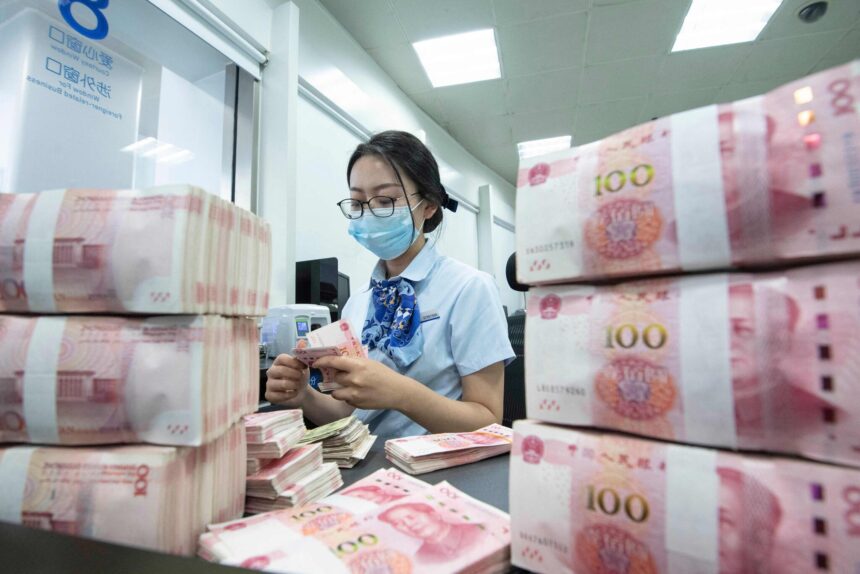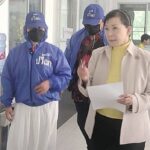BEIJING — China’s central bank, the People’s Bank of China (PBOC), lowered its main interest rates on Tuesday, 20 May 2025, making its first cuts since October 2024. This step comes as China faces a tough economic climate, with factories shutting down, job losses rising, the property sector under pressure, and loan defaults increasing.
Ongoing trade disputes with the US have made these problems worse. While the rate cuts show Beijing’s push to support growth, many experts believe they won’t solve the deeper problems holding back the economy.
The PBOC reduced the one-year loan prime rate (LPR) by 10 basis points to 3.0%. The five-year LPR, used as a guide for mortgage rates, also dropped by 10 basis points to 3.5%. Earlier this month, the central bank lowered the seven-day reverse repo rate to 1.4%. The reserve requirement ratio (RRR) was also cut by 50 basis points, with the PBOC injecting about 1 trillion yuan ($138.5 billion) into the financial system.
By making borrowing cheaper, these rate cuts are meant to help both businesses and households, encourage lending, and back China’s target of about 5% GDP growth in 2025. Still, many economists doubt these steps will do enough. Zichun Huang of Capital Economics said the rate cuts will lower payments on current loans, easing pressure on some companies, but won’t be enough to spark new lending or boost the wider economy.
Factories Close as Trade Tensions Grow
China’s manufacturing sector, long a key part of its strength, is suffering due to new US tariffs, now at 145% on Chinese goods. Orders from US clients have dropped, forcing factories to close and staff to take pay cuts or lose their jobs. In Putian, Fujian province, a shoe factory stopped production as orders dried up. Similar scenes are playing out from electronics plants in Guangdong to textile makers in Zhejiang.
The US policies under President Donald Trump have hit supply chains and squeezed profits. In April, Chinese exports of Apple iPhones and other mobile devices to the US fell to levels not seen since 2011. This slowdown is making shoppers in China more cautious, which hurts domestic growth as fewer people spend money.
Joblessness, especially among young people, is a growing problem. Official figures put the urban unemployment rate near 5%, but many experts think the real number is higher, especially in regions hit by factory shutdowns. Young workers and new graduates continue to struggle to find steady jobs. The labour market’s weakness has led to concerns about unrest, so the government is focusing on both job creation and economic support.
Reuters recently reported that factory owners are laying off staff or planning more cuts as a result of the tariff increases with the US. Analysts warn that China’s growth could slow even more if job losses continue.
Housing Trouble and Rising Bad Loans
China’s property market, once a strong driver of growth, is still in crisis. The recent cut to the five-year LPR and lower mortgage rates for first-time buyers show Beijing’s effort to revive the housing market. Still, many experts think these efforts won’t be enough to tackle the core problems, like too many unsold homes and a wave of developer defaults.
Falling home prices and a weak housing market have led to more bad loans, adding stress to Chinese banks. Commercial banks expect their net interest margins to drop by 10-15 basis points this year as they compete for customers in a slow market.
Xing Zhaopeng from ANZ said that part of the reason for the rate cuts is to help banks recover their profit margins and prepare for the future. The fall of large developers like Evergrande has left local banks and governments struggling with bad debt. The government has set up support to help finish incomplete housing projects, but many buyers are still too cautious to invest, holding back a real recovery. Tianchen Xu of the Economist Intelligence Unit noted that people are not responding much to lower rates, so the impact on property demand is limited.
The US-China trade war continues to weigh heavily on China’s economy. Even after both sides agreed to lower some tariffs, the US still has a 125% duty on Chinese imports. This has led to an expected 80% fall in trade between the two countries, placing new strain on China’s export sector.
China has responded with its tariffs, but many analysts say China stands to lose more overall. As Bob Davis wrote in TIME, if China sold off its large holdings of US Treasury bonds, the yuan would rise in value, making Chinese exports pricier and less competitive. This limits the government’s options for fighting back against US tariffs. The effects are spreading worldwide. For example, the European Central Bank cut its main rate to 2.25% in April to help offset the slowdown caused by US tariffs, showing how closely linked global trade has become.
China’s Broader Economic Response
China’s central bank and financial regulators have announced a range of policies to strengthen the economy. Along with the recent rate cuts, the PBOC plans to lower reserve requirements for auto finance firms to zero, freeing up more capital for lending. The government has also raised the quota for tools that support capital markets to 800 billion yuan to keep financial markets steady.
Despite these steps, most economists say China faces long-term structural problems. Deflation, weak consumer spending, and a property sector dragged down by debt all continue to slow growth. Lynn Song at ING said officials likely have early data showing the hit from tariffs and may announce further rate and RRR cuts later in the year if things get worse.
China’s economy surprised many in the first quarter of 2025, with GDP up 5.4% year-on-year. Factory activity also beat expectations last month despite trade pressures. But keeping this growth going will be tough as risks from outside China, such as the US trade policies, remain.
The PBOC is trying to boost growth but must also avoid causing capital to leave the country or pushing the yuan lower. Zhiwei Zhang at Pinpoint Asset Management said there’s no pressure now for the yuan to fall against the US dollar, giving the central bank room to act. As China manages these challenges, the world is watching.
The results of China’s policy choices will shape not only its economic future but also global markets and trade. For now, the interest rate cuts offer some relief, but whether they will be enough to lift an economy hit by factory shutdowns, unemployment, rising bad loans, and a battered property market remains an open question.
Source: Reuters, Global Times














